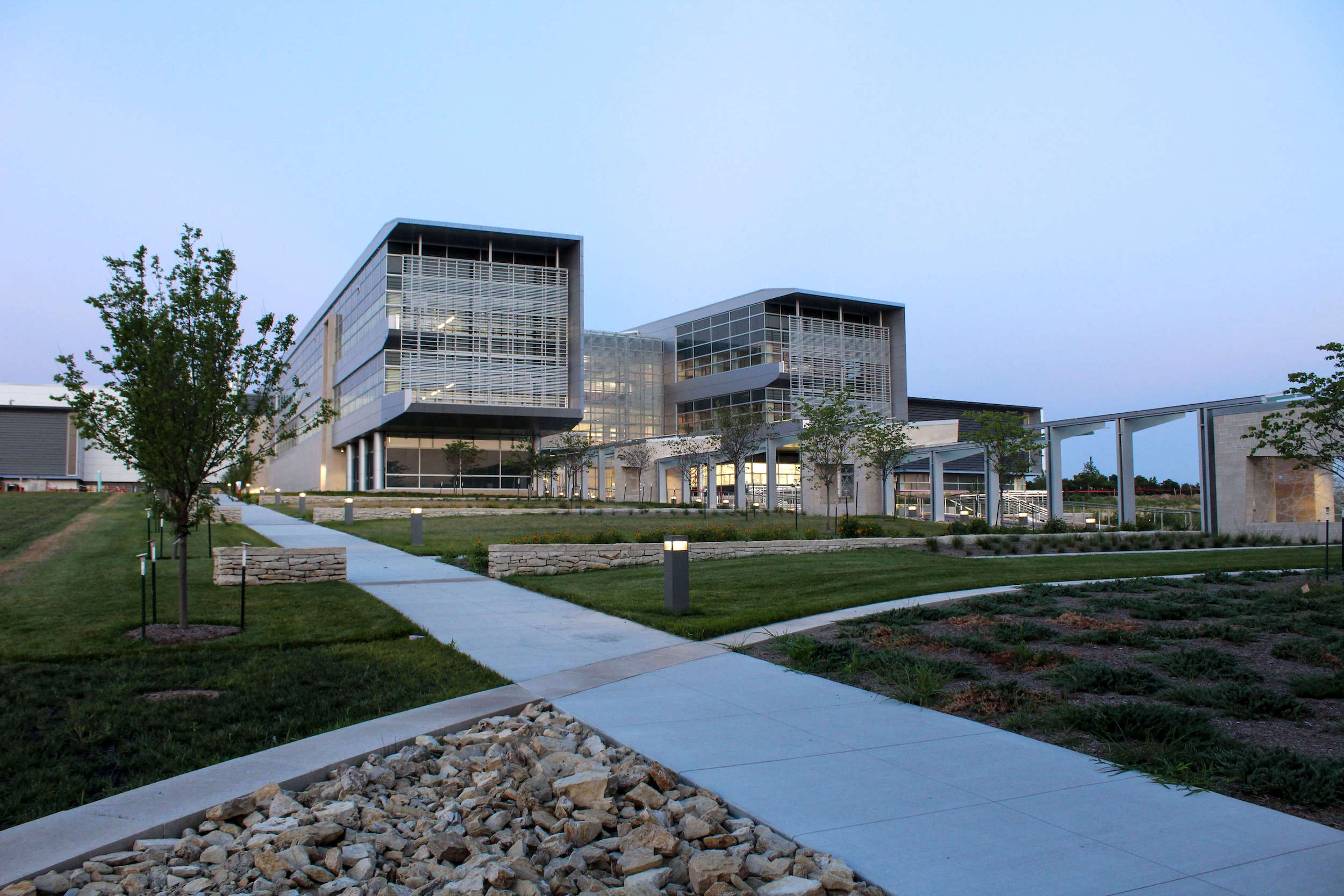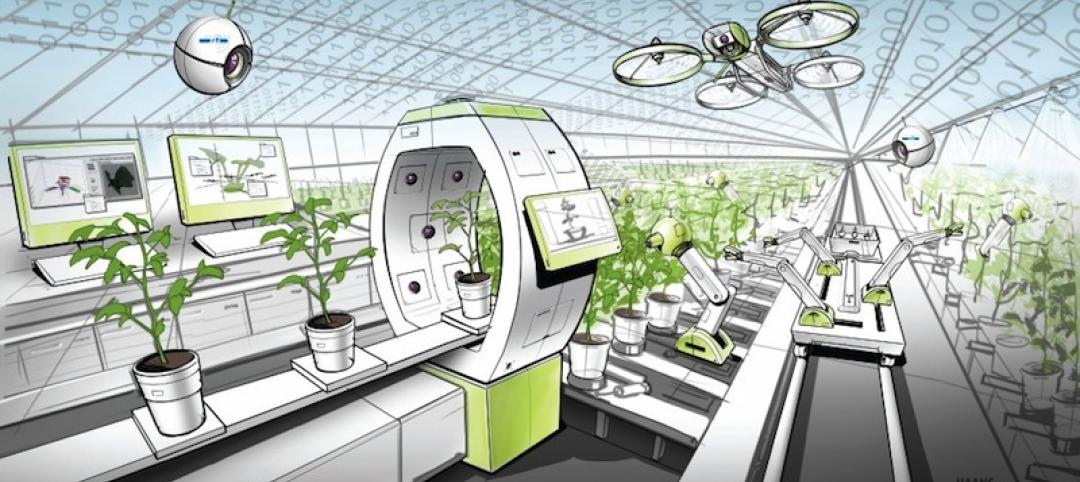In Manhattan, Kan., the National Bio and Agro-Defense Facility (NBAF), an animal disease research facility, has finished construction. Replacing the 68-year-old Plum Island Animal Disease Center, NBAF, when fully operational, will have labs functioning at multiple biosafety levels—including the nation’s first facility with biosafety level 4 containment capable of housing large livestock.
The 707,000-sf facility has been developed to ensure public health and the safety and security of the nation’s food supply. In 574,000 sf of lab space, scientists will safely study and diagnose high-consequence animal pathogens. In addition, an 87,000-sf utility plant houses boilers, chillers, emergency diesel generators, and other support elements for the main lab facility.
In addition to its state-of-the-art laboratories, NBAF will have a Biologics Development Module to explore potential vaccines, diagnostic platforms, and veterinary medical countermeasures.
With construction complete, the U.S. Department of Agriculture has begun to assume control of NBAF from the Department of Homeland Security Science and Technology Directorate. This involves confirming laboratory setup and making sure the equipment functions properly. “These are critical initial steps to ensure all research and diagnostics can be accomplished safely and effectively,” Ken Burton, NBAF deputy director, said in a statement.
The preconstruction, construction, and commissioning contract was valued at $1.06 billion. Despite pandemic-related challenges and delays, the project with commissioning came in under the $1.25 billion budget established by federal officials in 2014.
On the Building Team:
Owner/developer: U.S. Department of Homeland Security Science and Technology Directorate, which turned over operational responsibility to U.S. Department of Agriculture
Design team: NBAF Design Partnership JV (Perkins&Will, Flad Architects, Affiliated Engineers, WSP, and Merrick & Company)
Design architect: Perkins&Will
Architects of record: Perkins&Will and Flad Architects
MEP engineers: Affiliated Engineers, Inc., WSP, and Merrick & Company
Structural engineers: IMEG Corp. and Flad Architects
Construction manager: McCarthy Mortenson JV (McCarthy Building Companies, Inc. and Mortenson Construction)
Related Stories
Laboratories | Sep 12, 2017
New York City is positioning itself as a life sciences hub
A new Transwestern report highlights favorable market and regulatory changes.
Laboratories | Aug 3, 2017
Today’s university lab building by the numbers
A three-month study of science facilities conducted by Shepley Bulfinch reveals key findings related to space allocation, size, and cost.
Laboratories | Jul 18, 2017
Pfizer breaks ground on new R&D campus in St. Louis suburb
The facility will consolidate the company’s local workforce, and provide flexible work and research spaces.
Building Team Awards | Jun 12, 2017
The right prescription: University of North Dakota School of Medicine & Health Sciences
Silver Award: North Dakota builds a new medical/health sciences school to train and retain more physicians.
Laboratories | Apr 13, 2017
How to design transformative scientific spaces? Put people first
While most labs are designed to achieve that basic functionality, a transformational lab environment prioritizes a science organization’s most valuable assets: its people.
Laboratories | Sep 26, 2016
Construction has finished on the world’s largest forensic anthropology lab, designed by SmithGroupJJR
The lab’s main purpose will be to help in the investigation, recovery, and accounting of Americans lost in past wars.
Laboratories | Aug 8, 2016
The lab of the future: smaller, flexible, tech-enabled, business focused
A new CBRE report emphasizes the importance of collaboration and standardization in lab design.
Laboratories | Jun 16, 2016
How HOK achieved design consensus for London's Francis Crick Institute
The 980,000-sf, $931 million facility is the result of a unique financing mechanism that brought together three of the U.K.’s heaviest funders of biomedical research—the Medical Research Council, Cancer Research UK, and the Wellcome Trust—and three leading universities—University College London, Imperial College London, and King’s College London.















